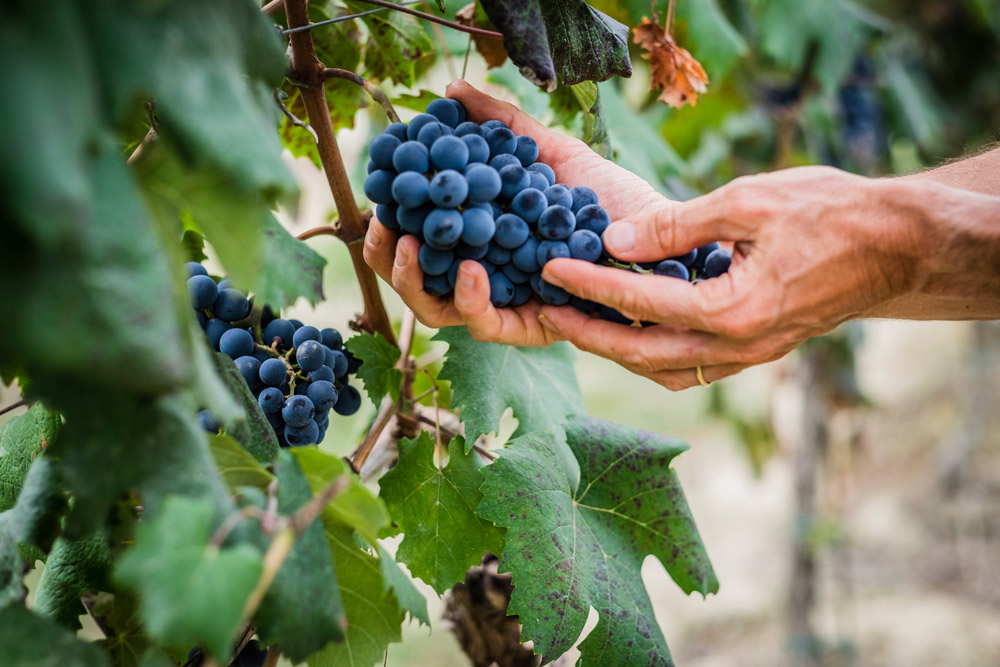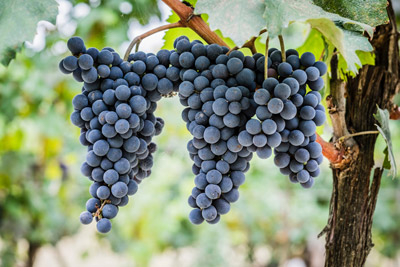-
Canopy Management
- » DF Pneumatic Leaf Remover
- » C-305 Independent Hydraulic Power Unit
- » CM-FF – Orchard Topper
- » CM-SF – Synchronized Bar Mower Topper
- » CM-SD – Synchronized Double Topping Machine
- » CM-SDT – Simple Synchronized Double Topping Machine
- » CM-SNU – Over-the-Row Topping Machine
- » CM-SNE – Electric and Hybrid Synchronized Topping Machine
- » CM-B – Basic Topping Machine
- » CM-SN New Model Synchronized Topping Machine
- » CM-S Synchronized Topping Machine
8 things to know about the vintage

The harvest is the process of harvest of the grapes used in the production of wine, which marks thebeginning of a crucial phase in the production cycle.
This article explores the various aspects of the harvest, by the methods of collection to special techniques such as late harvest, with a focus on the Piedmont region and its wine-making traditions.
Cosis the harvest?
The harvest is the process of harvest of the grapes for the wine production and it is one of the most important moments in the life cycle of a vineyard. This process is crucial because it directly affects the quality of the wine.
The harvest time depends on ripeness of the grapes, which need to reach an optimal balance between sugar, acidity and tannins to ensure a high quality product (1).
What is the harvest period?
The harvest usually takes place between late August and October inthe northern hemisphere, but the exact period varies based on the type of grape and the region. For example, the grapes for sparkling wines are picked first, followed by the white grapes, while the red grapesare often harvested later, in October (1) (2).
In Piedmont, one of the regions most prestigious wine d’italia, harvestingthe grapes usually begins in September for the early varieties , and continues until October for the red grapes, the most valuable, as the Nebbiolo used to produce wines such as Barolo (2).
Harvest manual VS mechanical harvest,
The harvest may be made either manually , which mechanically.
The manual harvest is more traditional, and allows for a careful selection of the bunches of grapes, ensuring that only the best are collected. This method is often used for high-quality wines, as it reduces the damage to the clusters, and preserves better theintegrity of the grapes (3).
Dthe other hand, the mechanical harvest, is more efficient in terms of time and manpower, allowing you to cover quickly in large areas. However, does not allow you to select precisely the most mature grapes and can damage the grapes and delicate (1) (2).

Cosis the late harvest?
The late harvest is a technique in which the grapes are left to ripen longer period than is typical of the collection, leading to afurther concentration of sugars. This practice is especially common in the production of sweet wines and fortified wines, such as sweet wines and some wines dessert.
During the over-ripeness, the grapes lose water, which increases the concentration of sugars, acids and other aromatic components, giving the wine more complexity.
Another beneficial effect of late harvest is the development of noble rot (Botrytis cinerea, a fungus that, in favourable weather conditions, acts on the skin of the berries, making them softer and increasing the sweetness andintensity of the aromatic wine (4).
The presence of noble mould, however delicate and requires special conditions: sunny days and secchand, combined with cool nights and moist. This mold will not only further reduces the water content in the grapes, but gives the wine unique characteristics as hints of honey, dried fruit, and spices.
This process is not possible in all the vineyards, or every year, because it strictly depends on the climate. The wines obtained from grapes harvested late in the season, with the noble rot, such as Sauternes French or some dried Italian, are known for their balanced sweetness and the aroma of the complex (4).
8 things to know about the harvest,
the Choice of the right time
, The time of harvest is determined by the level of ripeness of the grapes. Growers regularly monitor the levels of sugar and acidity in the grapes, to decide the ideal time (1) (2).
Hand picking and mechanical
Lthe introduction of new technologies, such as machinery for the collection and monitoring systems of maturation, has made harvesting more efficient, even if it can damage the grapes . However, for high-quality wines, the manual collection remains irreplaceable (1) (2).
Altitude –
Laltitude is one of the key factors influencing the time of the grape harvest, since it has a direct impact on the temperature and on the rate of ripening of the grapes.
In higher areas, such as those typical of some areas of the Piedmont, the weather is cooler, thus slowing down the ripening process and often by bringing to a late harvest compared to the areas with a low proportion (3).
The cooler temperatures in the hilly areas, to allow the grapes to develop more gradually, keeping a better balance between sugar and acidity, which is essential for producing high quality wines. In addition, theexposure to the sun varies with thealtitude, affecting the heating of the screws and the degree of maturation (1).
In Piedmont, where you will find numerous vineyards on the hills, the conditions in height play a crucial role in the quality of the crop. The vineyards are located at different altitudes may present a time of harvest scaled to obtain the clusters at the highest level of maturation (1) (3).
Harvest by night
In some regions, the harvest is performed at night to avoid the heat from daytime compromise the quality of the grapes. This method is common in warm areas such asAustralia (1).
Late harvest and noble rot
The grapes are harvested late in the season, develop a sugar concentration is higher, and can be prone to noble rot, which enriches the wine of complex notes and aromatic (3) (4).
Collection to climb
The collection to scale, also called the harvest in the multiple steps, is a technique used mainly in the vineyards of high quality.
In this approach, the grapes are harvested in several stages to ensure that each grape is harvested at the perfect level of ripeness.
This method requires a constant monitoring of the vineyard, in order to select only the grapes have reached optimum maturity, in each moment, leaving those still immature for the next harvest (1) (2).
This type of harvesting is particularly useful in the vineyards with changes in microclimate, allwithin the same parcel of land, or in regions where the climatic conditions vary from one day to theother.
The collection scalar allows you to get a superior quality raw material, reducing to a minimum the collection of the grapes are not ripe or over-ripe. Furthermore, this technique is often adopted for wines of high range, where it is essential that the grape contributes to the complexity andbalance of the wine (1) end (3).
Climate change
climate change have influenced the calendar of the harvest over the last few decades, with higher temperatures leading up to the time of collection (2).
The climate change they are having a significant impact on the schedule of the harvest over the last few decades. Lincrease in average temperatures has led to an anticipation of the stages of maturation of the grapes, with many vineyards that see the collection also start with a month in advance, compared to thirtyyears ago (2).
This change affects not only the time of the grape harvest, but also the characteristics of thegrapes with higher levels of sugars and acidity, lower, thus altering the balance of aromatic and structural of the wines. The vintages hot can lead to wines with alcohol content higher and aromatic profiles different than the past (1).
In addition, the increase in temperature is not the only aspect of climate change to affect the harvest. Extreme weather events, such as prolonged droughts or heavy rainfall, can affect both the quantity and quality of the crop.
The wine producers are increasingly forced to adapt their farming techniques as theirrigation and the management of the foliage of the vines, to meet these new challenges of the climate. This has also led many wineries to experiment with a variety of d’uva more resistant to heat, to cope with the changes (1) (4).
Experiences of harvest for the general public
In recent years, many wineries in italy have begun to offer experiences of harvest open to the public, allowing visitors to actively participate in the collection process.
These experiences, often organized during the season of the harvest, give to theopportunity to experience the life in the vineyard, discovering not only the process of gathering the grapes, but also the history and techniques that lie behind the production of the wine.
In many cases, theexperience includes guided visits to wineries, tastings of the wines produced and moments of conviviality among the participants and producers, enriching the knowledge of the wine and creating a direct link with the territory (2) (4).
Conclusions
The harvest represents a crucial moment for the production of wine, where the quality of the grapes determines the character of the wine.
In Piedmont, as well as in other important wine regions, the harvest combines tradition and innovation to ensure that each cluster be harvested at the right time (3) (4).
(You might be interested in: Machinery, inter-row: between the lines of the green vineyards)
Sources bibiografiche
(1) pazobaion.com/en/types-of-grape-harvest/
(2) sommelierwinebox.com/blogs/curiosita-sul-mondo-del-vino/cosa-ce-da-sapere-sulla-vendemmia
(3) pazobaion.com/en/the-art-of-harvesting/
(4) sommelierwinebox.com/blogs/curiosita-sul-mondo-del-vino/cose-la-vendemmia-tardiva-sei-cose-da-sapere
(5) pazobaion.com/en/trellising-vine-training-system/
Source images: Adobe Stock license

